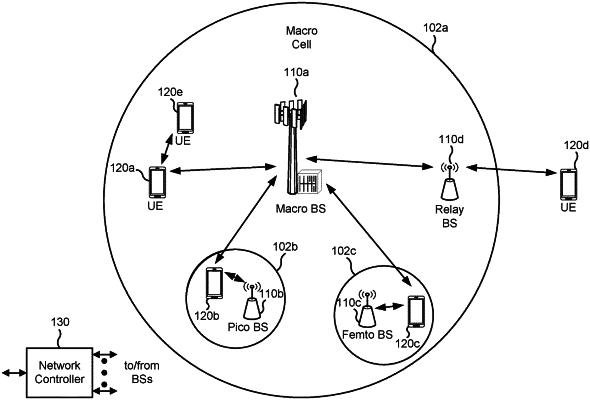| CPC H04W 72/541 (2023.01) [H04J 13/16 (2013.01); H04L 5/0051 (2013.01); H04W 72/21 (2023.01); H04W 72/23 (2023.01)] | 30 Claims |

|
1. A method of wireless communication performed at a user equipment (UE), comprising:
transmitting a first indication indicating a recommended null resource element pattern or a recommended quantity of resource elements for a null resource element pattern in at least one of a UE capability report or a channel state information (CSI) report;
receiving downlink control information (DCI) that includes a second indication indicating a particular null resource element pattern of a set of null resource element patterns,
at least one of the recommended null resource element pattern or the recommended quantity of resource elements included in the null resource element pattern depending on at least one of:
a maximum rank configured for physical downlink shared channel (PDSCH) reception of the UE, or
a precoding resource block group configuration;
performing one or more demodulation interference measurements using the particular null resource element pattern; and
demodulating a downlink communication responsive at least in part to performing the one or more demodulation interference measurements.
|